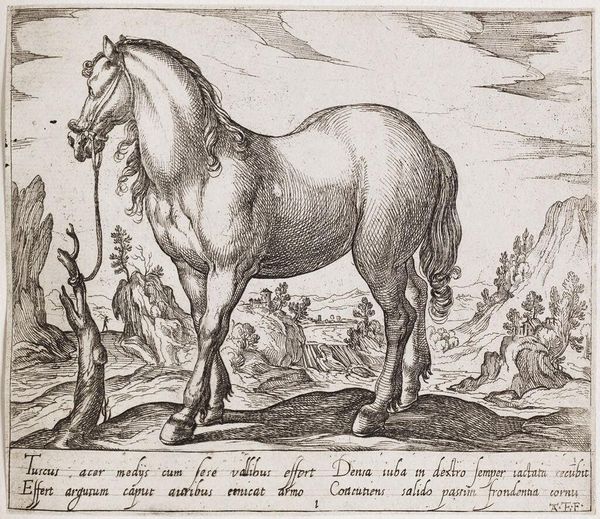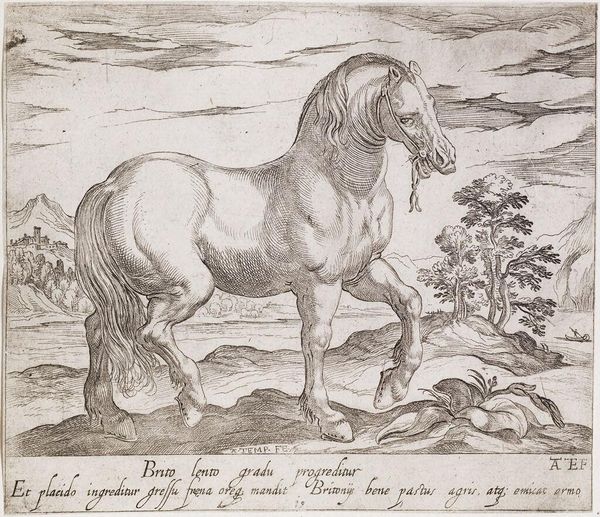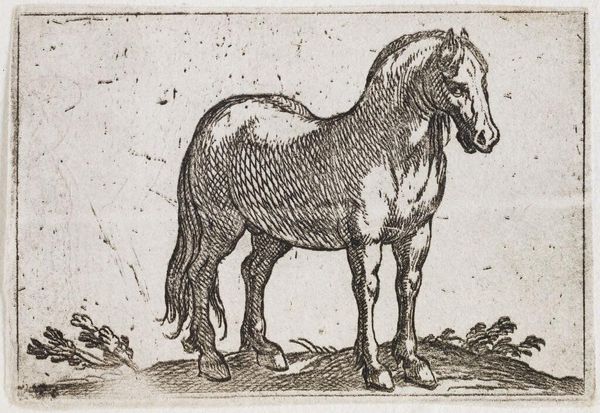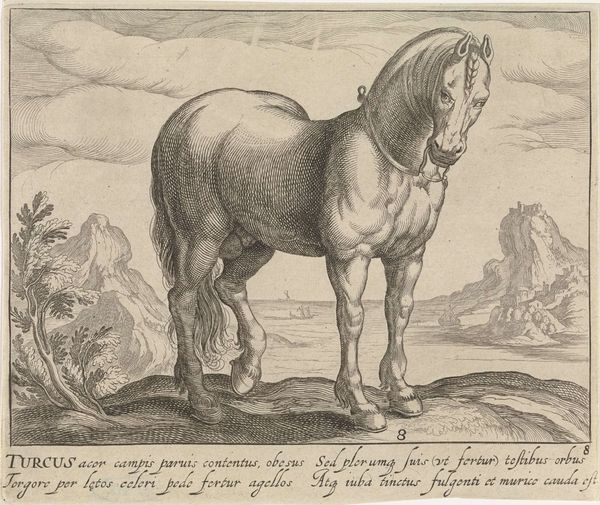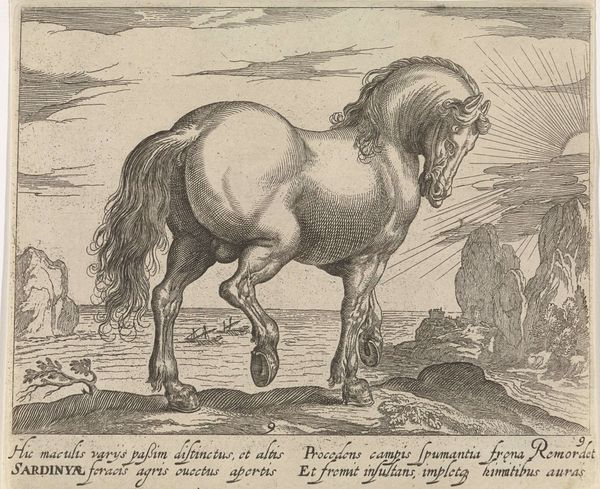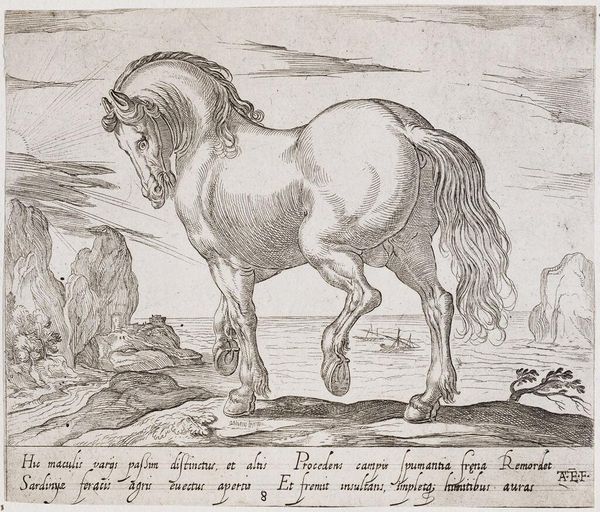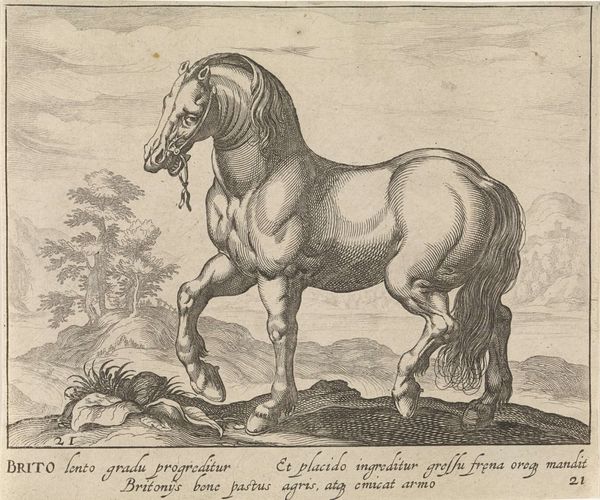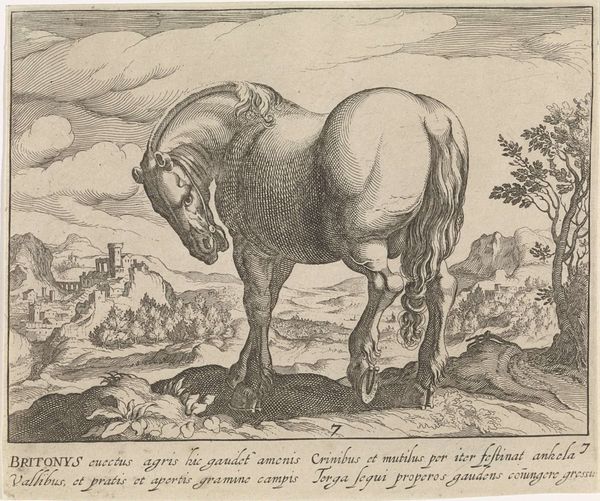
Copyright: CC0 1.0
Curator: Here we have Antonio Tempesta's "A Standing Horse, Facing Right," an engraving residing in the Harvard Art Museums collection. It evokes a rather stoic, almost melancholic presence, doesn't it? Editor: Indeed. One immediately notices the density of line and how it models the horse's musculature. The hatching creates such a tactile sense of volume and weight. Curator: Tempesta, active in the late 16th and early 17th centuries, was known for his battle scenes and animal studies. This piece, though, feels less about action and more about ideal form, wouldn’t you agree? It recalls classical sculpture and its impact on Renaissance art. Editor: Precisely. One sees an almost academic approach to rendering the animal’s anatomy. I do wonder about the function of the landscape behind it. How might we consider it with regard to the horse's presentation? Curator: I suspect it's providing context. Horses, then as now, held symbolic value connected to nobility, power, and the military class. Editor: A fascinating interplay of subject, technique, and social meaning, indeed. Curator: It truly makes one consider the political symbolism of art in the Renaissance period.
Comments
No comments
Be the first to comment and join the conversation on the ultimate creative platform.
